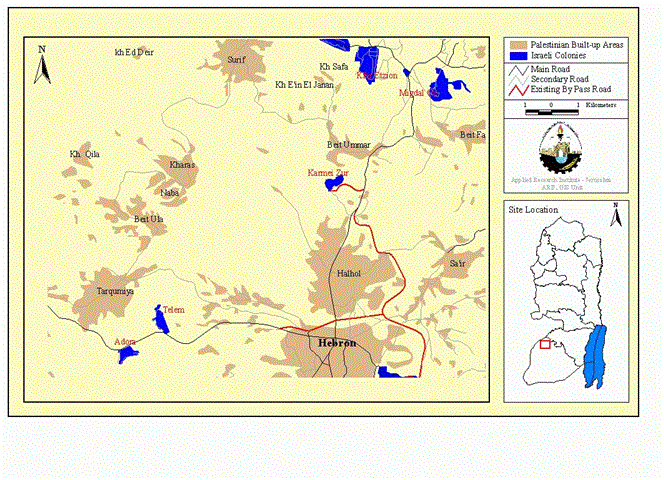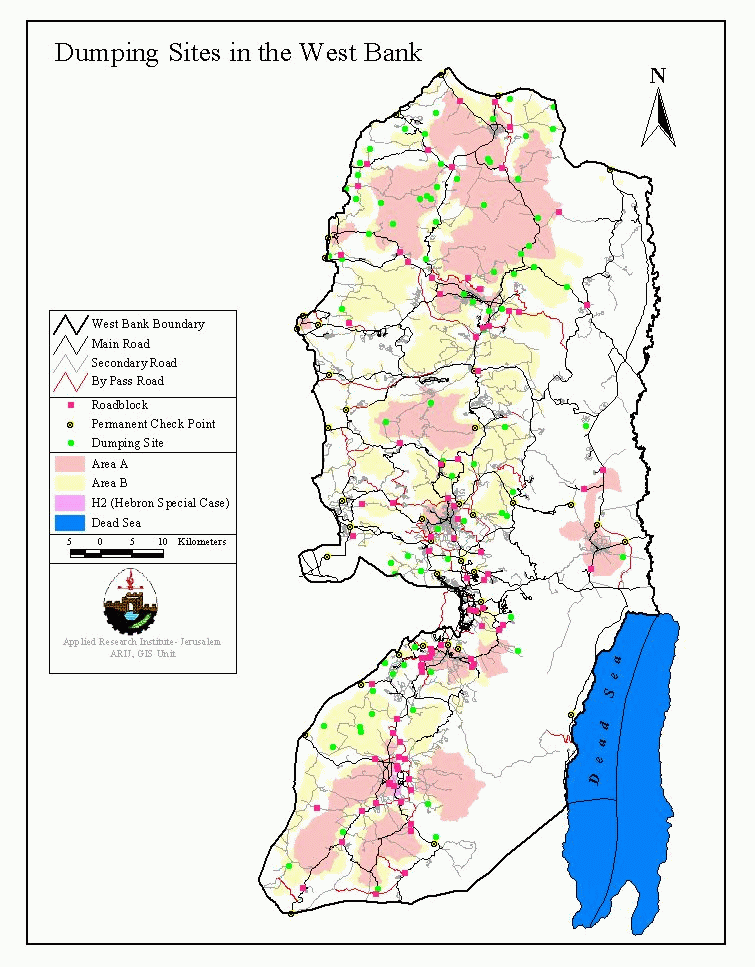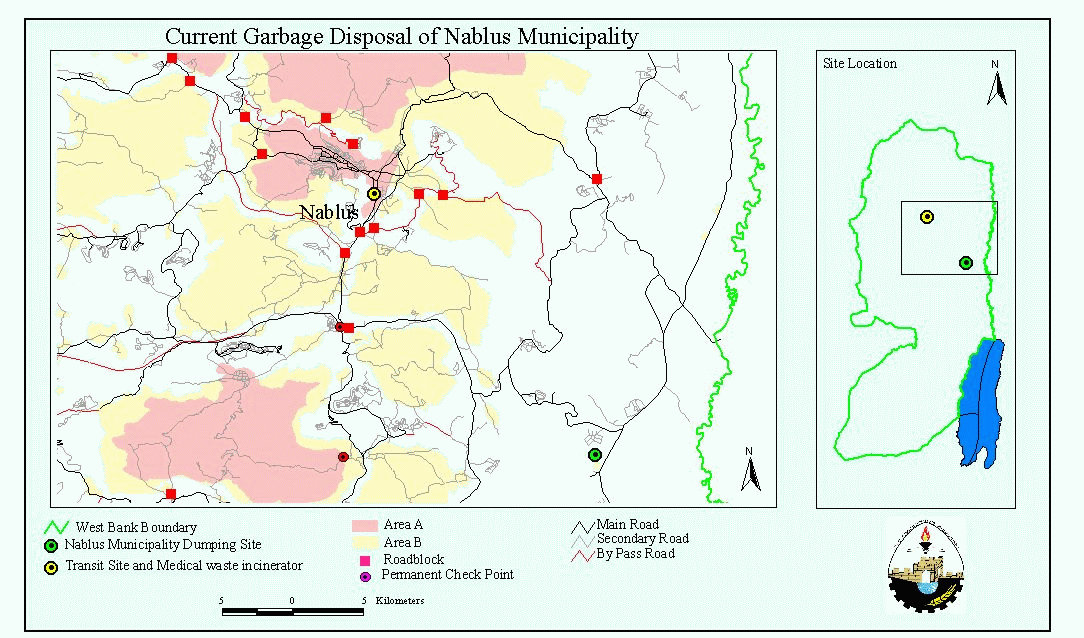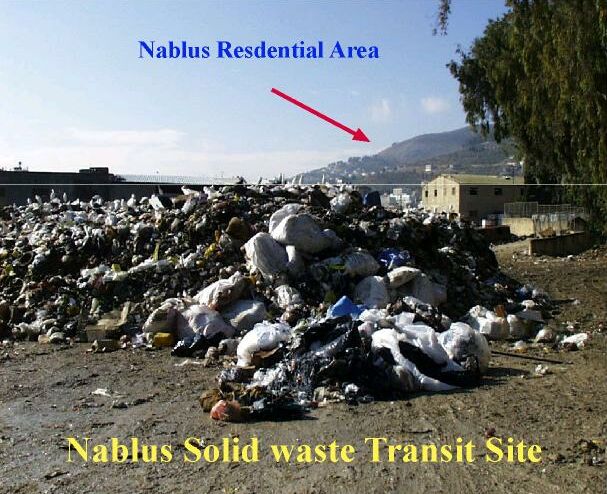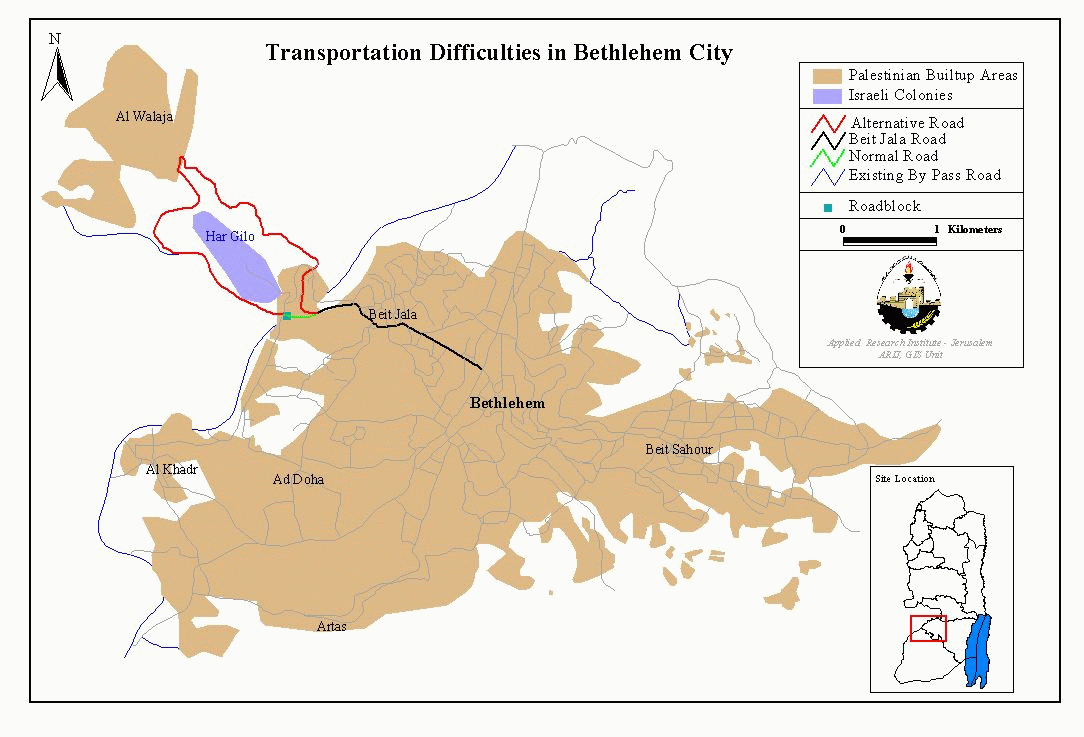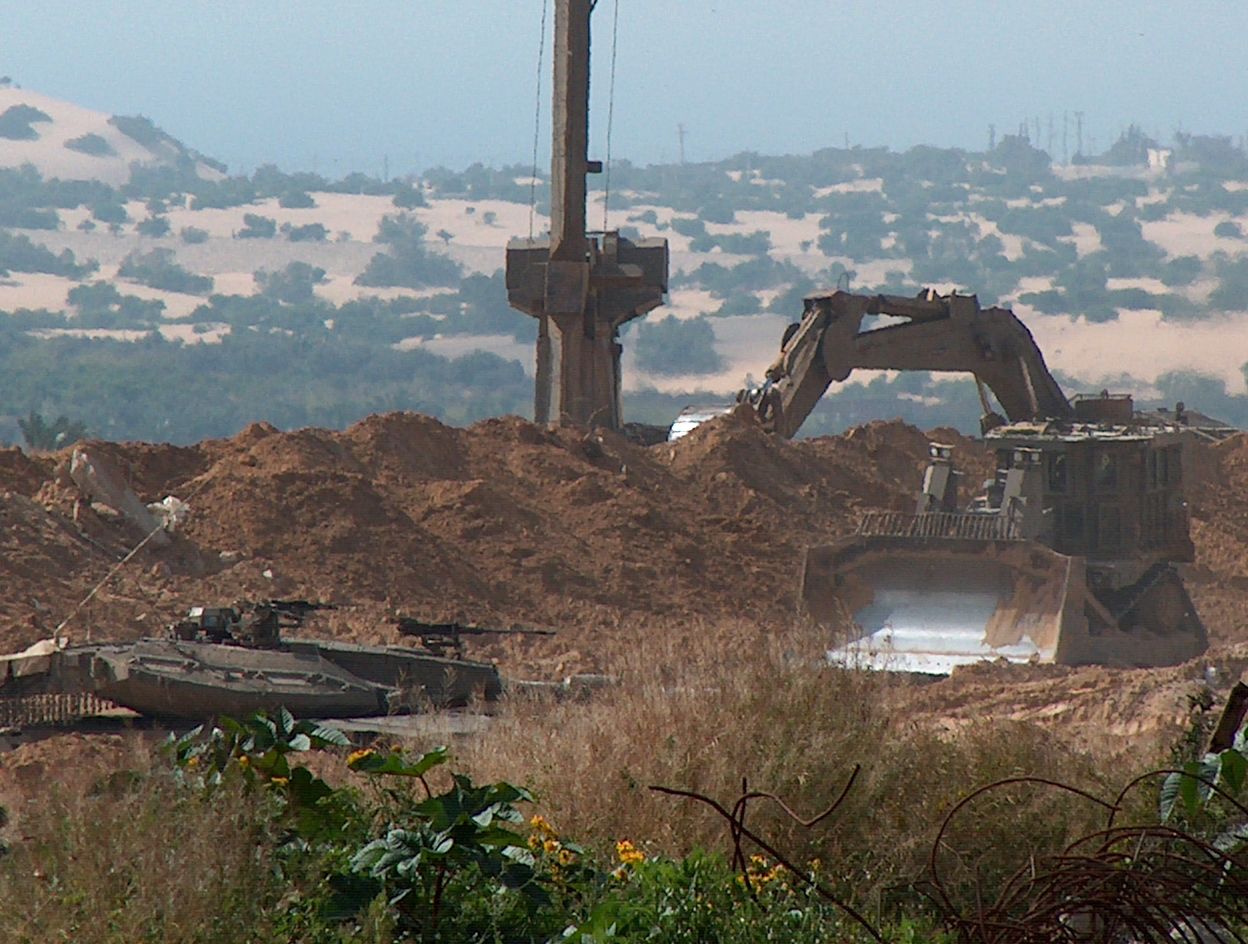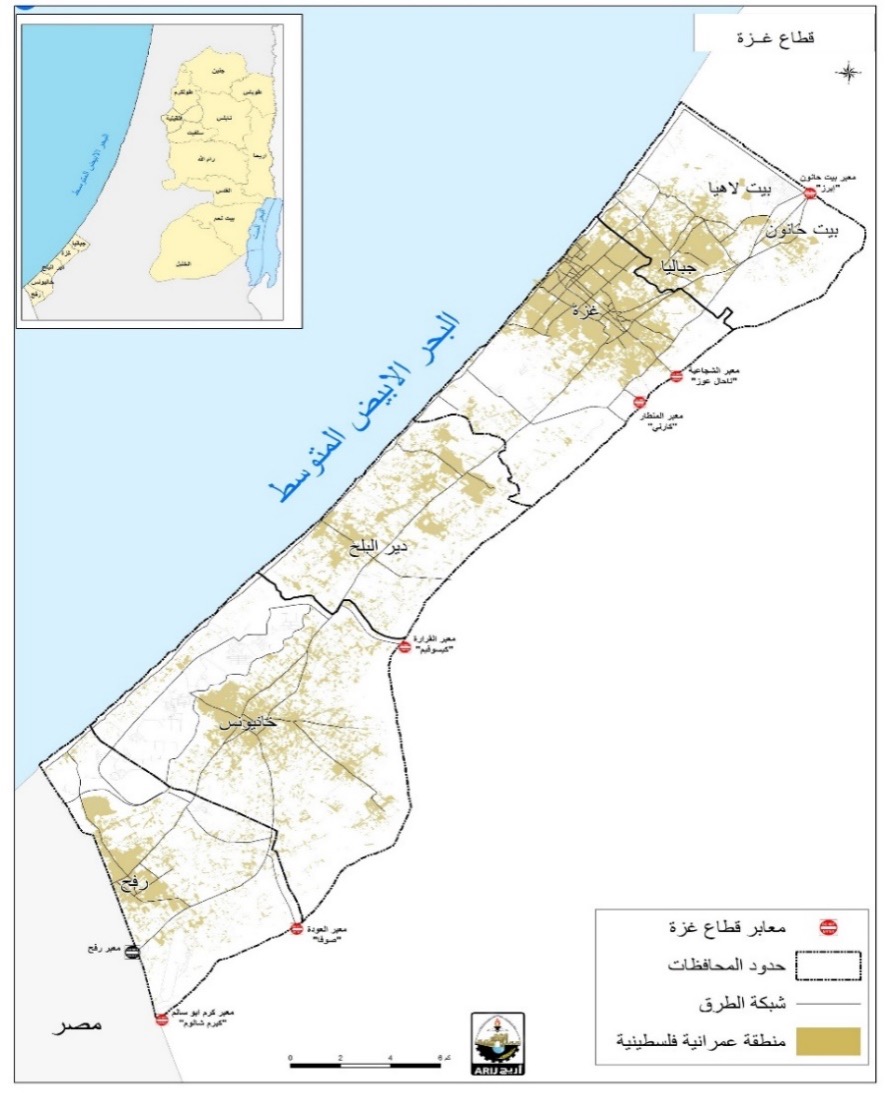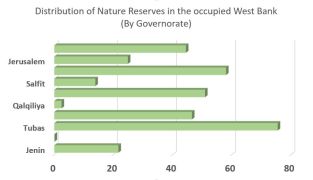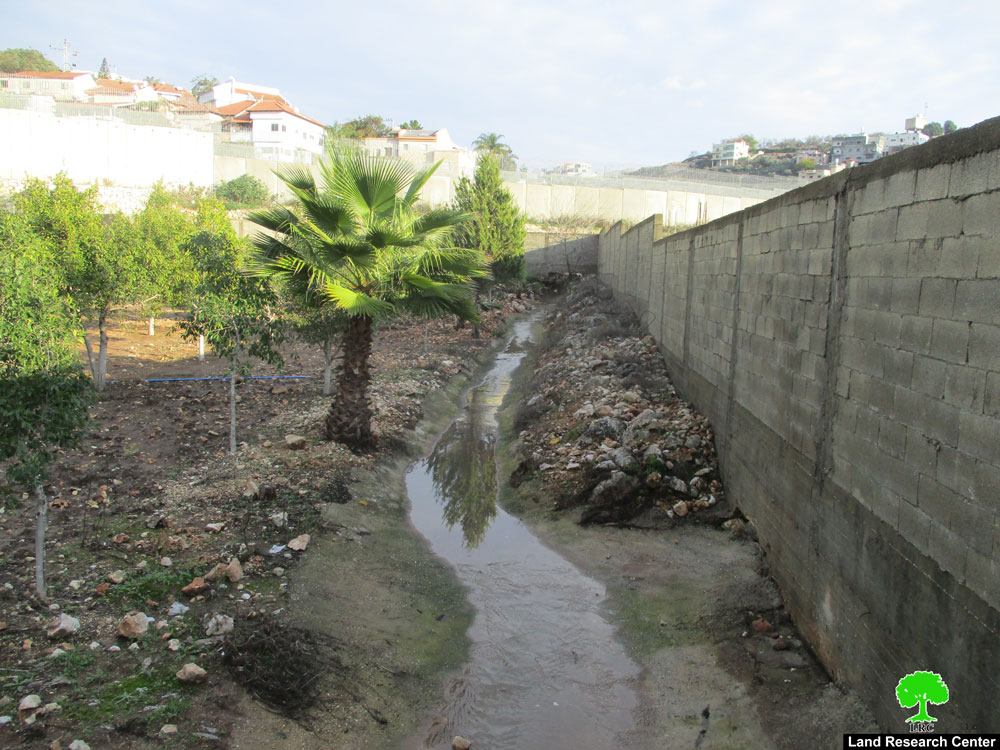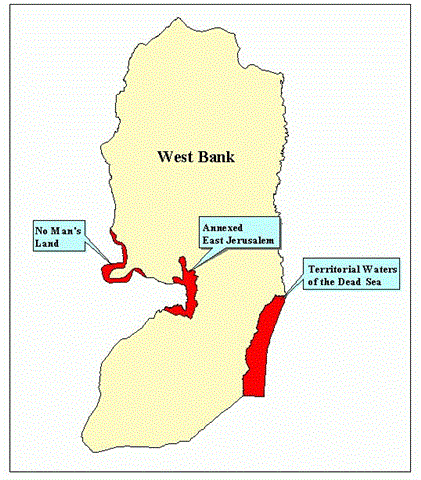Introduction
Israeli settlements in the occupied Palestinian territories are environmentally unsustainable, incongruent with indigenous land use and are a source of regional conflict. Palestinian objection to the existence of Israeli settlements in the occupied Palestinian territories is not limited to the issue of their illegality. Fourth Geneva Convention, Article 49, item 6 states that: â??The occupying power shall not deport or transfer part of its own civilian population into the territory it occupiesâ??. These settlements impose a serious threat to the sustainability of Palestinian natural resources and continue to be one of the leading causes of their degradation. The actions of the settlements and industrial zones seem to indicate a double standard towards environmental protection, with practices differing in the West Bank and Israel. Although thorough surveys on the environmental effect of settlements have yet to be carried out, there are numerous indicators that point towards a number of severe problems.
Most settlements are built on confiscated Palestinian agricultural or communal grazing lands which has led to the uprooting of thousands of fruit trees and, as a result of the reduction in land cover, has increased soil erosion. From the time of signing of the Oslo I Accords in September 1993 to October 2000, Israel uprooted over 77,350 fruit trees, confiscated 262,600 hectares of land and bulldozed 7,250 hectares in the process of expanding West Bank settlements and opening new roads to serve the Israeli settlers. Israeli settlements in both the West Bank and Gaza Strip consume unsustainable amounts of scarce Palestinian water resources. While the annual per capita Palestinian domestic / urban / commercial / industrial / tourist water demand is estimated to be between 20-30 cubic meters per year, an Israeli uses an average 125 cubic meters per year. While Palestinians are struggling to connect the remaining 25% of the population in Palestine to household water distribution systems, Israeli settlements in the West Bank and Gaza Strip receive a continuous water supply, largely from wells within the Palestinian territories. During the dry summer periods, Palestinian communities are left without water for extended periods of time. In contrast, nearby Israeli settlements receive a continuous supply, sufficient to keep their lawns green and their swimming pools in use.
It has been estimated that in 1997 the 300,000 Israelis living in the West Bank and East Jerusalem produced nearly 30 MCM of wastewater annually. This is to be compared with an estimated 31MCM of wastewater produced in the same year by the 1,870,000 Palestinians. Thus, despite the Israeli settlers are less than one sixth of the Palestinian population in the West Bank, they discharge similar amounts of wastewater. Furthermore, wastewater from Israeli settlements in the West Bank is not restricted to domestic effluent. Many settlements house industries such as plastics, pesticides, leather and tanning, aluminum, asbestos, batteries, cement and canned food factories. The wastewater from these settlements contains carcinogenic and hazardous compounds such as chromium, zinc, cadmium and acidic compounds. It seems that part of the reasons firms had been relocated within the West Bank is the ability to avoid Israeli environmental restrictions and regulations.
Other Israeli settlements in the West Bank are primarily cattle and livestock farms. The manure from these farms is also dumped in concentrated form into Palestinian valleys and agricultural lands, destroying the soil structure and polluting water resources. In addition, the dumping of animal manure creates breeding grounds for mosquitoes and flies, increasing the potential of major diseases. An example is the village of Nahalin, southwest of Bethlehem, where livestock farm effluents from the nearby Rush Tsorim settlement are dumped on village land.
As long ago as 1993, a World Bank report noted that ''Sewage is often allowed to run into valleys, even if a neighboring [Palestinian] village is threatened''. The situation does not seem to have improved. Some settlements have their wastewater pumped to Israel for treatment, very occasionally the wastewater is disposed of through Palestinian sewerage systems. But the rest of the settlements have their wastewater collected and discharged untreated into the nearby valleys.
Field surveys have indicated the Palestinian communities affected by the discharge of untreated sewage from settlements. Without complete field surveys, it is not possible to say conclusively how wide spread this practice is. However the information available shows that settlements in all Palestinian districts discharge untreated sewage. In addition to affecting these Palestinian communities, much of this discharge occurs in the recharge area of the shared Western aquifer. This affects the drinking water supplies for both Israelis and Palestinians.
With the existing management system of solid waste, Palestine faces an increasing solid waste management problem. Over the past 30 years, management of solid waste at all stages of collection, transportation and disposal has not been given enough attention from the Israeli occupier. The pressure on the Palestinian environment from solid waste management practices is further intensified by the considerable amount generated by Israel settlers. Solid waste from Israelis is dumped without restriction on Palestinian lands, fields, and side roads.
Palestinians have no access to information about the composition nor the disposal of solid waste generated by settlers; however, evidence shows that much of this waste is being disposed of on the many illegal dumped sites within the PalestinianTerritory. The solid waste generated in West Jerusalem, for example, is transferred to the dumping site of Abu Dis in the West Bank. A number of settlements and military bases are also known to dump their waste on Palestinian land, including Enav near Tulkarm and Homesh, Elon Moreh near Nablus and Ariel near Jayous.
The quantities of solid waste generated in urban areas are higher than those generated in rural areas. The per capita solid waste generation rates in the West Bank were estimated from several studies. These studies showed figures in the range 0.5 to 1.0 kg per capita per day. It is estimated that approximately 500 thousand tons of domestic waste is generated yearly in the West Bank, i.e. about 1,370 tons per day (ARIJ, 2000).
Regarding the Israeli solid waste generation within the Israeli settlements in the West Bank and East Jerusalem, it is assumed that an individual generates about 1.8 kg daily (ARIJ, 2000). Thus, the total annual quantity of solid waste generated by settlers is estimated to be 224,000 tons of solid waste i.e. about 614 tons per day. Again about one sixth of the population generate about one half of the solid wastes quantity.
Environmental damage during the current Intifada
Impacts of the current hostilities on the Palestinian environment are in two-folds. Firstly, there are actions of the Israeli army and settlers which directly damage the Palestinian environment. Such actions include the uprooting of trees, bulldozing of agricultural land supposedly for military purposes and the construction of new by pass roads. Secondly, there are indirect effects of the situation, particularly of the closure and curfews that have been imposed on Palestinian cities, towns and villages. For example, solid waste dumping sites are mainlylocated in areas B and C.
Agriculture
''..the moment they do something against us, they know that their orchard is a goner, and so are their fields''. A resident of Elei Sinai settlement in Gaza (Haaretz Newspaper 01.12.00)
In addition to the injuries and death of thousands of Palestinians, the Palestinian territories have been exposed to physical and property destruction of houses and different other buildings. The Israeli authority has also completely destroyed large Palestinian agricultural fields containing thousands of dunums of agricultural products. These actions are probably the most environmentally damaging of all the current Israeli army activities. Between 28th September and 21st November, 2000 a total of 2828.5 dunums (282.85 hectares) of land were cleared by Israeli forces in the Gaza Strip. Over 80% of this land was agricultural. Since 22nd November until 6th December, at least a further 474 dunums of agricultural land have been demolished. In the West Bank, most land has been cleared in the Ramallah district where 707 dunums were cleared. The documented cases of cleared land in the West Bank already reach 992 dunums, bringing the total of Palestinian land destroyed by Israeli forces to 4294.5 dunums. The total number of trees estimated by the Ministry of Agricultural that has been destroyed in both the West Bank and Gaza is at least 67,000. The details of the West Bank destructions can be found in the following table.
|
District Name |
Uprooted trees |
Cleared Land (dunums) |
|
Bethlehem |
110 |
18 |
|
Hebron |
35 |
146 |
|
Jenin |
70 |
7 |
|
Jericho |
50 |
44 |
|
Jerusalem |
20 |
NA |
|
Nablus |
5668 |
70 |
|
Qalqilya |
885 |
NA |
|
Ramallah |
1243 |
707 |
|
Tulkarm |
65 |
0 |
|
Total |
8146 |
992 |
The indirect impacts on agriculture have also been very severe. As a result of the closure, farmers have been prevented from reaching their fields and have been prevented from taking their goods to market. The agricultural inputs have become less accessible and more expensive, and transportation costs (in those cases where transport is possible) have risen. In those cases where it has been possible to sell the produce, farmers have often been forced to sell their crops at much reduced prices. The value of losses has been huge. The Ministry of Agriculture has estimated the losses up to :_ time to be more than $81 million including the losses from land and trees destroyed.
Noise
Under normal conditions, the main cause of noise pollution in Palestinian towns is transportation. Since 29th September, clashes have added to the noise pollution. However, most of the noise disturbances have come from Israeli shelling from helicopters and tanks, helicopters hovering over towns and an increase in sonic booms from military aircrafts being flown over population centers. Constant sleep deprivation and fear caused by this noise pollution can be assumed to have a very severe impact on the psychological well being of the population particularly children.
Wastewater
Israeli colonizing activities have long caused problems for Palestinians because of their wastewater disposal methods. During the current intifada, settlements have continued to dump untreated wastewater into valleys leading to Palestinian agricultural land and population centers
A Case Study – Beit Omar Village
The village of Beit Omar is greatly affected by sewage dumping from nearby Israeli settlements. Their case provides a vivid example of human suffering and environmental damage from sewage dumping. Beit Omar is an agricultural village located 15 kilometers northwest of Hebron city. The village buildings and agricultural areas are located on a hillside surrounded by mountains on two sides and by the Israeli settlements of Gush Etzion and Karme Zur on the other two sides (Location Map).
Etzion settlement is the largest settlement built on Beit Omar agricultural land housing approximately 2,200 population. On its establishment in 1967, Etzion settlement contained a small unit for wastewater treatment. However, it seems that with the vast expansion of this settlement and the subsequent increase in its population, the wastewater treatment plant soon became unable to meet the large quantity of effluent from the settlement. Annually, in October for the past few years, the untreated wastewater has been channeled into a valley, which leads to the agricultural lands of the Beit Omar village (see photo). This coincides with the harvest time for the grapes. This October, around 30-35% of the agricultural land ha been severely damaged by the wastewater dumping. Such damage affects the income of approximately 5,000 inhabitants of Beit Omar. The crops from approximately 800 dunums of orchards and grapevines have been lost this year (about 400 tons). (Photo showing the affected agricultural areas).
In addition to the wastewater from Etzion settlement, there is also pollution from Karme Zur. Karme Zur is an agricultural settlement located to the northeast of Beit Omar. The settlement has several large livestock dairy farms. The manure from these farms is collected in cesspools at the edge of the farm. Frequently, when the cesspools become full, their contents are dumped into the valley of Beit Omar, covering extensive agricultural areas and destroying cultivation and trees.
In 1991, Israel ratified the International Covenant on Economic, Social and Cultural Rights. This obligation makes these actions clearly illegal. Israelis living in settlements are able to discharge their water in ways that would be unacceptable in Israel. Palestinians have no control over these practices and no information as to the content of the water being discharged. It is important that firm and immediate action be taken by all concerned parties to stop the dumping of sewage by the Israeli settlements so that there might be an end to people's suffering from the negative impacts of such careless practices. These Israeli activities show a total disregard for the Palestinian people and their environment. The social costs inflicted by sewage dumping from Israeli settlements should be covered by the Israeli authorities as part of their responsibilities as occupiers of the Palestinian territories and the Palestinian natural resources.
Palestinian Wastewater
Many Palestinian communities are not connected to mains sewage systems and rely on cesspits and tankers for their wastewater disposal. Extensive periods of closure over the past weeks and numerous permanent road blocks erected by the Israeli forces (See map) have made it impossible for tankers to reach villages. In Tulkarem and Jenin districts, municipality workers have been prevented from accessing the wastewater treatment stations.
Water Supply
A report from the Palestinian Hydrologist's Group indicated that more than 200 Palestinian villages have suffered water cuts during the current hostilities. For example, the villages of 'Azmut, Talfit, and Umm el Tut in the Nablus district, which receive their water through Israeli settlements, have all suffered from water cuts.
Coastal aquifer management programs (CAMPS) intended to improve the water situation for approximately 1.20 million Palestinians over the next 20 years have missed the implementation of their second phase as experts have pulled out from the area. The main water pump in Jenin, was out of use for large periods of time due to repeated power cuts and replacement parts being stuck in Israeli airports.
Solid Waste
Furthermore, throughout the months of hostilities, the Israeli authority has restricted the mobility of Palestinians within the Palestinian territories, and between the Palestinian territories and the rest of the world. This has been done by placing check-points or digging deep ditches at the entrance of each Palestinian city or town so that nobody is able to exit or enter into a different location from where they are. The restricted mobility of Palestinians has disabled and prevented solid waste from being delievered to the disposal sites. (see map). In addition, work on the Hebron-Bethlehem joint landfill project funded by the European Investment Bank has stopped (as a result of worker and materials being prevented from reaching the site). Preparations for the GTZ/KFW solid waste project in Ramallah have also been halted. The World Bank sanitary landfill project in Jenin has stopped, and two projects in Tulkarem (the installation of an incinerator in Anabta along with Italian landfill project) have been delayed indefinitely.
Case Study – Nablus Municipality
The solid waste generated in Nablus city is normally collected and disposed of at a disposal site in the Jordan Valley near the Israeli settlement Beqa'ot. However, due the closure imposed by the Israeli army and the restricted mobility of Palestinians, this site is currently inaccessible (see map). The municipality has been obliged to draw up an alternative waste disposal plan. Fortunately for the residents of the city, garbage collection has continued through out this period, though collection now occurs between 3-4am as opposed to the normal 6-7am in order to avoid clashes.
Disposal of the collected garbage is the real difficult problem the cities are facing. The city is now using an alternative temporary disposal site, located in a residential area (see map and photo). Beyond some spraying of insecticides, this site has no environmental controls. Nablus city produces around 150-200 tons of waste per day. The temporary site has a capacity of somewhere between 4000 and 5000 tons, providing temporary storage for 33 days of waste at the most.
Case Study – Hebron
In addition to the extended periods of closure suffered by Palestinian areas, Hebron has also been placed under curfew. This has made solid waste collection very difficult. In addition to the restrictions on access, many workers are unwilling to enter area H2 due to the tensions and the fear that settlers will target them. As a result, only one truck has been entering this area to collect refuge. In normal times, four trucks are used to collect rubbish.
Transportation and air pollution problems
The current political situation has caused a complete blockade of all Palestinian main roads in areas B and C. Naturally this has caused Palestinians to search for alternative tracks and secondary roads by which to enter and exit area ''A''. In those cases where an alternative route can be found, it is usually along unpaved roads which lack any transportation management. The traveling time is increased, causing increased vehicle emission and damage can be done to land. Another important air emission factor is the roadblocks set up by Israeli army on main roads at the entrance to area ''A''. Palestinian cars at road blocks are often required to wait idle in long queues and some cases for long period of time while the motor is kept running.
Case Study -Beit Jala
A common way to drive from Bethlehem to Hebron is to go via Beit Jala on to the By-pass road (see map). To travel from one side of Beit Jala to the other is normally a short journey of around 400m. However, the roadblocks that have been built by the Israeli army mean that the only way to travel between these two points is by taking a circuitous route around the hillside. The length of this route is around 5.6 km. The estimated increase in the amount of emissions using the W.H.O. standard amounts to 0.1573 kg CO, 0.0162 kg SOx , 0.0178 kg NOx and 0.0223 kg VOC per kilometer driven. This journey is currently extended by 5.6 km. This extension adds to the emissions from the journey by 0.88 kg of CO, 0.09 kg of SOx, 0.10 kg of NOx and 0.12 kg of VOC.
Conclusion
The current situation has highlighted the ability of the Israelis to inflict damage on the Palestinian environment and to affect negatively on the environmental health of the population. Pressure needs to be placed on Israel, perhaps through the international community, to cease such activities. It is essential that this damage be accurately recorded so that a clear comparison can be made between the way Israelis act in the West Bank and in Israel. But most importantly, until Israel withdraws from the West Bank, these actions need to be documented so that compensation can to demanded for the effected communities and so the Israelis can be shamed into changing their behaviour before more damage is inflicted.
The Palestinian Ministry of Environmental Affairs (MENA) has also compiled a report on environmental damages during the current Intifada .
Prepared by:
The Applied Research Institute – Jerusalem


